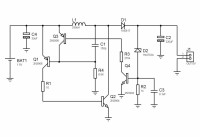Get 5-volts from an exhausted alkaline cell

Every day we throw away usable power alkaline cells. Since the device in which we use them can not work with partially discharged cells, the circuit that I present can raise the voltage of one exhausted cell to 5V to use it in any other application, for example to turn on a led, feed a microcontroller or feed remote sensors that do not demand much energy.



Discussion (9 commentaire(s))